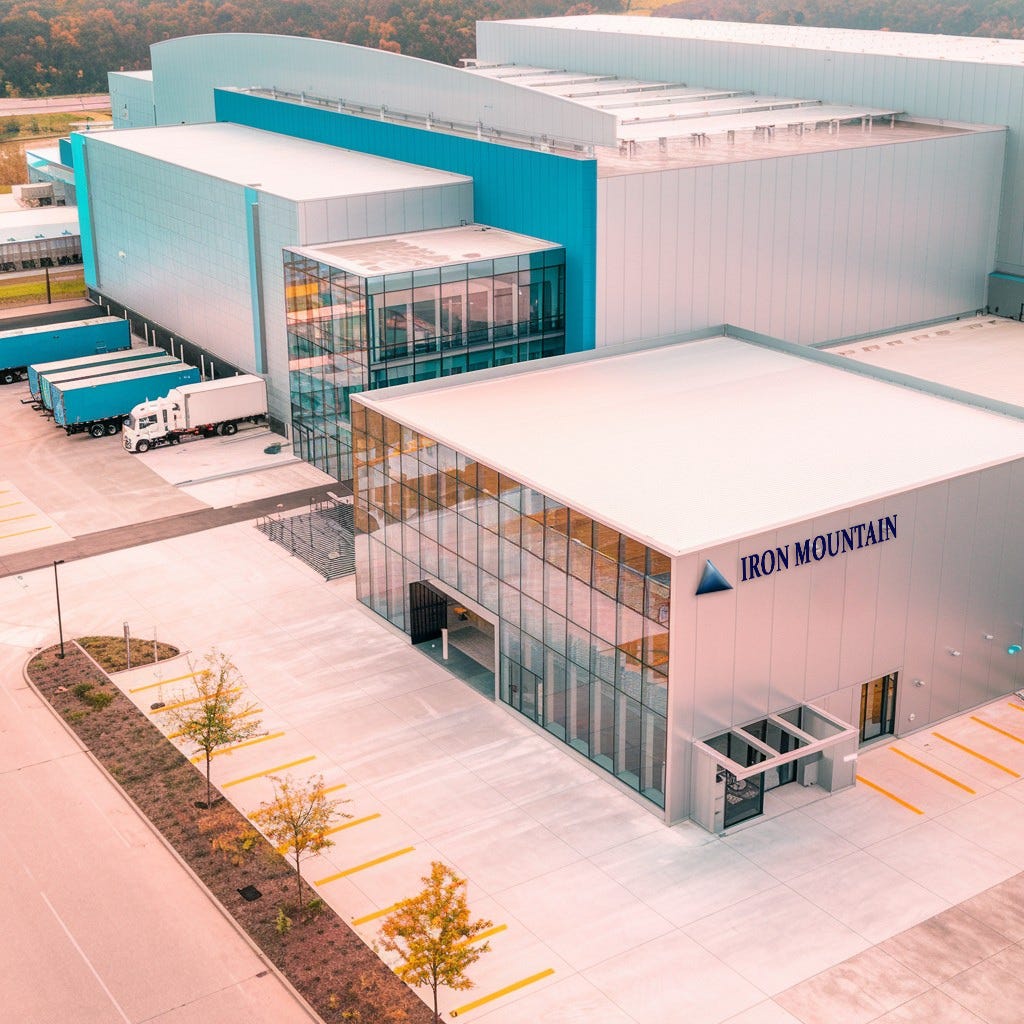Iron Mountain’s Silent Surge: A Strategic Masterclass in India’s Data Center Boom
How the Web Werks deal reveals Iron Mountain’s strategy for entering and scaling in India’s data center market.
You received this email because you subscribed to Global Data Center Hub, a newsletter about the global data center sector.
Thank you very much for supporting my newsletter this month. Your readership encourages me to provide these insights, and I’m truly grateful for it.
We publish new insights seven days a week, helping you stay ahead of the most important shifts in data centers, AI infrastructure, and global connectivity.
Our premium insights are reserved for paid subscribers.
If you haven’t upgraded yet, now’s a great time:
👉 Subscribe and join hundreds of readers of “Global Data Center Hub” with a 20% discount on the annual plan: Subscribe here
In 2021, Iron Mountain bet on India. In 2025, they’re doubling down.
After four years of methodical partnership, Iron Mountain has fully acquired Web Werks, one of India’s top-tier data center operators.
What started as a $150M joint venture has evolved into a high-capacity, pan-India platform with over 14 MW live and 150+ MW in development.
Why now?
Because India isn’t just a growth market anymore—it’s the next AI frontier.
Here’s why it matters—and what it signals for the next phase of India’s data center market.
From JV to Full Control: A 4-Year Playbook
In 2021, Iron Mountain entered India with a $150M joint venture—a beachhead strategy designed not to dominate, but to learn, localize, and scale.
The partner? Web Werks, a respected homegrown data center operator with a footprint in Mumbai, Pune, and Noida, plus a reputation for carrier-neutral interconnection.
What followed was textbook:
Year 1–2: Joint buildout, customer alignment, market learning
Year 3: National expansion—adding Bengaluru and Hyderabad
Year 4: Site acquisitions in Chennai and Navi Mumbai
2025: Full acquisition + leadership succession
This wasn’t a financial flip. It was a strategic operating partnership matured over time—with control taken only once integration was culturally and commercially ready.
It’s rare. And it worked.
Iron Mountain India 2.0: The New Footprint
With the acquisition complete, Iron Mountain now operates 6 facilities across India’s key digital corridors:
Mumbai (2)
Pune
Noida
Hyderabad
Bengaluru
Collectively:
→ 14MW of operational IT load
→ 152MW of expansion planned across three major campuses
Mumbai (MUM-3): 32MW in Navi Mumbai, $170M investment, live in H2 2025
Chennai (CHE-1 & CHE-2): 36MW total capacity on a 4-acre site
Noida: Expansion to reinforce NCR presence and serve northern enterprise demand
This gives Iron Mountain national reach, hyperscale-ready capacity, and entry into India’s two most globally connected metro regions—Mumbai and Chennai.
But footprint is only half the story.
The Leadership Shift: A Signal, Not a Surprise
As part of the acquisition, Web Werks founder Nikhil Rathi steps down after 29 years. His departure is more than symbolic—it marks the end of the founder-led growth phase and the beginning of the hyperscale-led era.
Stepping in is Rajesh Tapadia, a heavyweight from Nxtra by Airtel, with prior stints at NTT, Genpact, and Reliance. Known for both operations and partnerships, Tapadia has deep roots in enterprise infrastructure and hyperscale client relations.
He joins a dual leadership team with Arvind Subramanian, Iron Mountain’s Managing Director in India.
The signal is clear:
→ Iron Mountain isn’t just operating in India.
→ It’s scaling with India.
Why This Deal Matters: India’s Digital Gravity Shift
India’s digital infrastructure story is accelerating—fueled by:
Hyperscaler cloud and AI deployments
5G rollout and mobile-first population growth
Enterprise digital transformation
Government push on data localization and AI sovereignty
Global cloud and AI players now see India not just as a market, but as a strategic node in their infrastructure stack.
And that means the race is no longer about where you have capacity—it’s about how fast you can scale it, secure it, and interconnect it.
Iron Mountain’s move checks all three boxes:
Scalable capacity
Secure, compliance-led operations
Carrier-neutral interconnectivity
It’s a value proposition designed not for the past—but for the AI era.
Investor Takeaways: What the Market Should Learn
1. Long-game partnerships win in new markets.
Rather than “buying in” cold, Iron Mountain built the relationship, tested the market, scaled together—and only then took control.
2. Talent transitions are strategic levers.
Leadership isn’t just operational—it’s reputational. With Tapadia, Iron Mountain signaled it’s serious about winning enterprise and hyperscale trust in India.
3. Pan-India platforms are now table stakes.
Point solutions won’t cut it. Operators that want to serve AI and cloud clients must offer regional diversity, megawatt scale, and deep connectivity.
The Bigger Picture
As India’s AI infrastructure wave crests, global and local players alike are making big bets:
NTT’s NAV2 campus in Navi Mumbai (500MW)
AdaniConneX expanding in Chennai and Hyderabad
Equinix quietly growing via acquisitions
Microsoft, AWS, and Google investing billions in edge-to-core capacity
In this context, Iron Mountain’s acquisition is less a finish line—and more a starting gun.
Final Thought
The real lesson here?
You don’t need to rush into a new market. You need to understand its rhythm, partner with the right people, and scale when the time is right.
Iron Mountain didn’t buy India.
They earned it.
And now, they’re positioned to build something bigger than capacity: trust, scale, and resilience in one of the world’s most important digital frontiers.
One More Thing
I publish daily on data center investing, AI infrastructure, and the trends reshaping global data center markets.
Join 900+ investors, operators, and innovators getting fresh insights every day and upgrade anytime to unlock premium research trusted by leading investors and developers.

